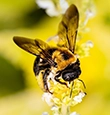Bee Facts & Information
Hawx is always reliable. Always innovative.
Get $350 Off Bee Service
20,000+ 5-STAR REVIEWS
“Connors Trader went the extra mile to make sure he listened to our needs regarding the ant problem we had.”
- Larry
“He sprayed indoors and out, swept my eaves for spider webs and took care of a couple of wasp nests.”
- Rick
“He even sprayed on my deck, which no one else has done.”
- Sue

Bees aren’t just busy making honey—they’re important pollinators that help keep our ecosystems balanced and our food supply going. In fact, they contribute billions of dollars to agricultural production each year simply by pollinating our crops.
While they’re usually not aggressive as childhood cartoons may imply, bees can become a problem when they decide to build nests in or around our homes. Let’s look at how to identify different bee species, understand their behavior, and find ways to prevent them from becoming unwelcome houseguests.
How to Spot Different Types of Bees
The U.S. is home to over 4,000 native bee species, plus the introduced European honey bee. Many live in colonies led by a queen, although some—like carpenter bees—are more solitary.
Bees typically have hairy bodies, four wings, and long, elbowed antennae. Their legs are often fuzzy, too, which helps them carry pollen around.
Here’s a quick look at a few of the bees you might encounter:
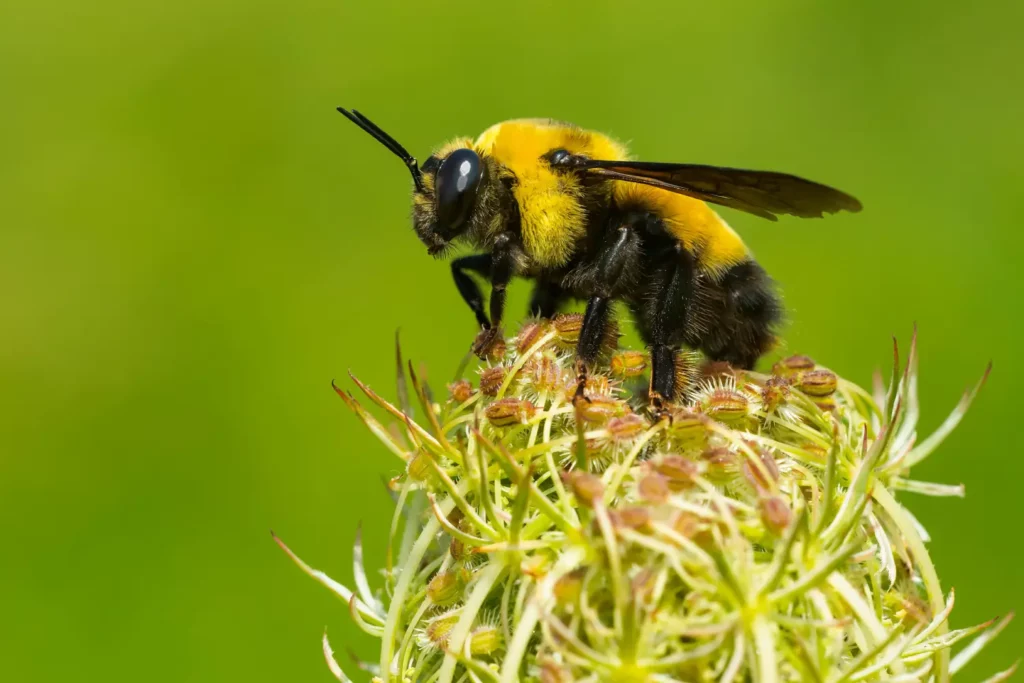
- Bumble Bee (Bombus): Large, fuzzy, with black-and-yellow stripes. Gentle by nature and amazing pollinators, their numbers are declining in some places due to habitat loss and pesticides.
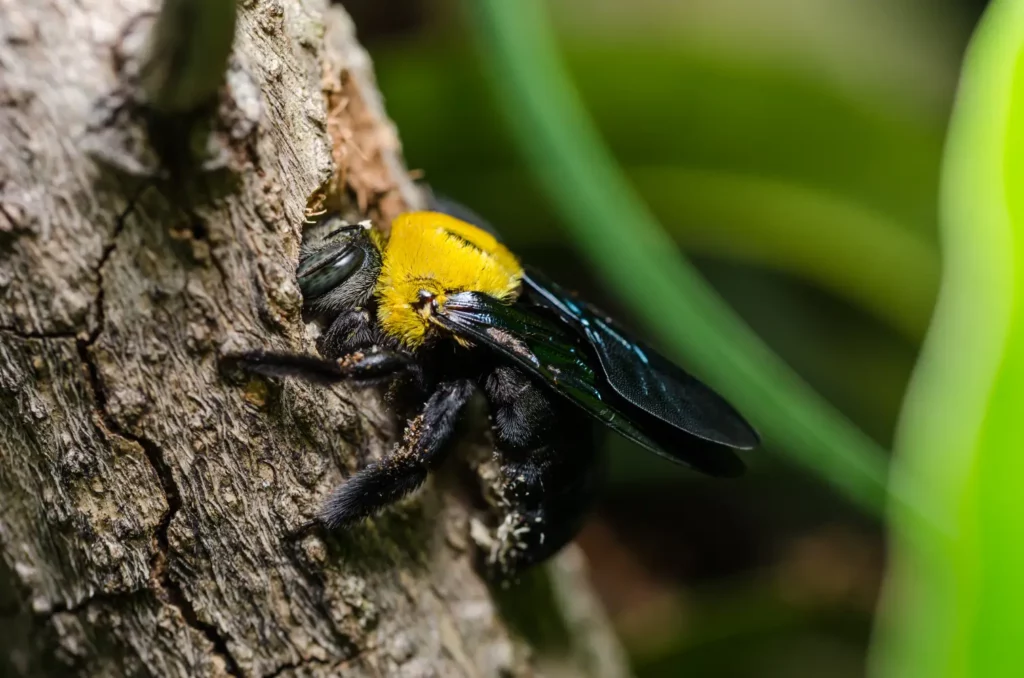
- Carpenter Bee (Xylocopa): Robust, shiny black abdomen, often spotted drilling into wood to lay eggs. They pollinate a range of flowers, but can be a nuisance if they burrow into your home’s structure.
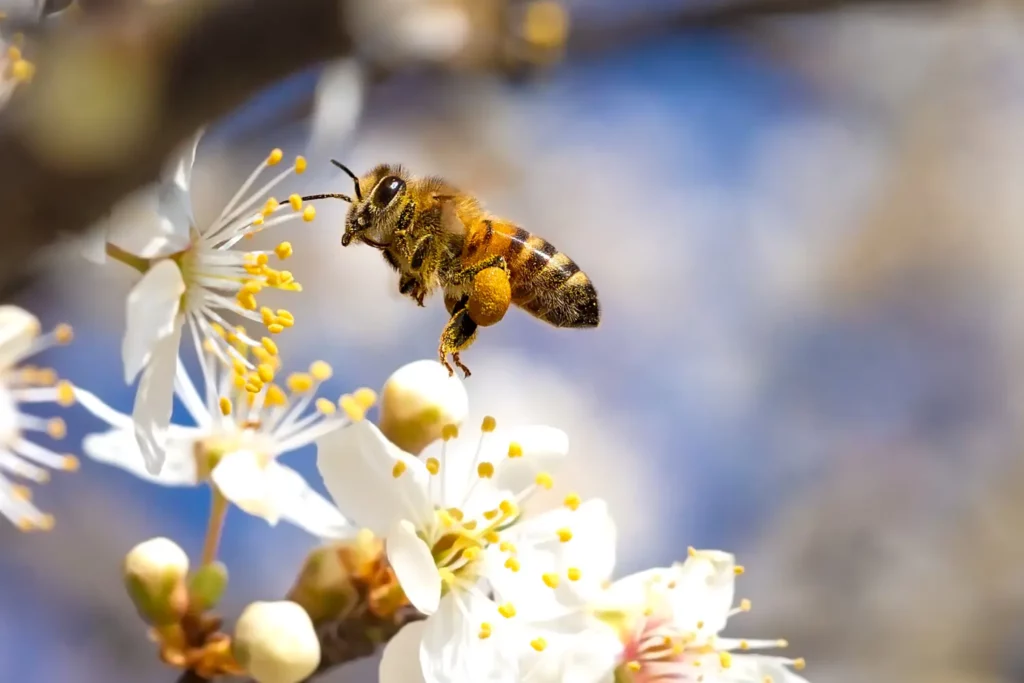
- Honey Bee (Apis mellifera): Typically golden-brown with black stripes and a fuzzy thorax. They live in big colonies, produce honey, and pollinate many of our crops, though they’ll sting if threatened.
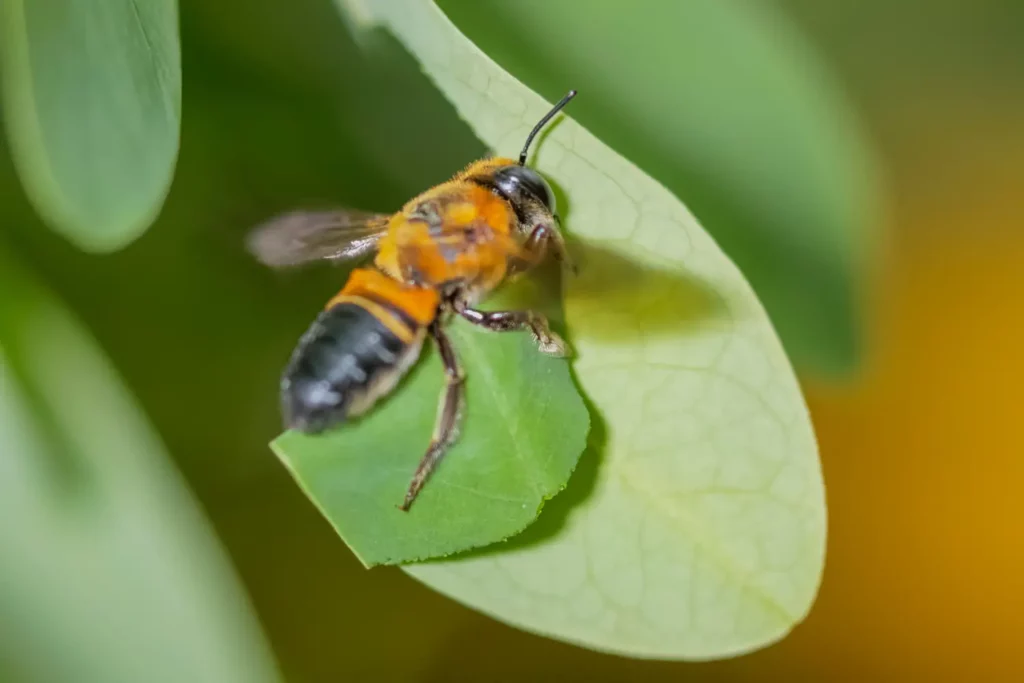
- Leafcutter Bee (Megachilidae): Known for cutting neat circles out of leaves to build their nests.
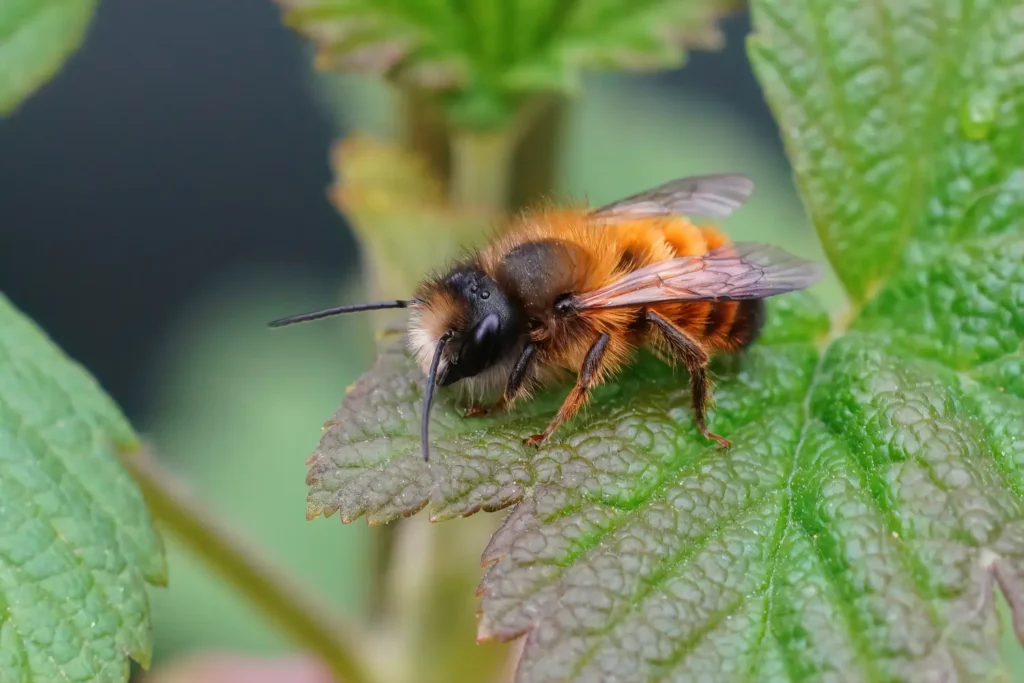
- Mason Bee (Megachilidae): Uses mud or similar materials to construct nests.
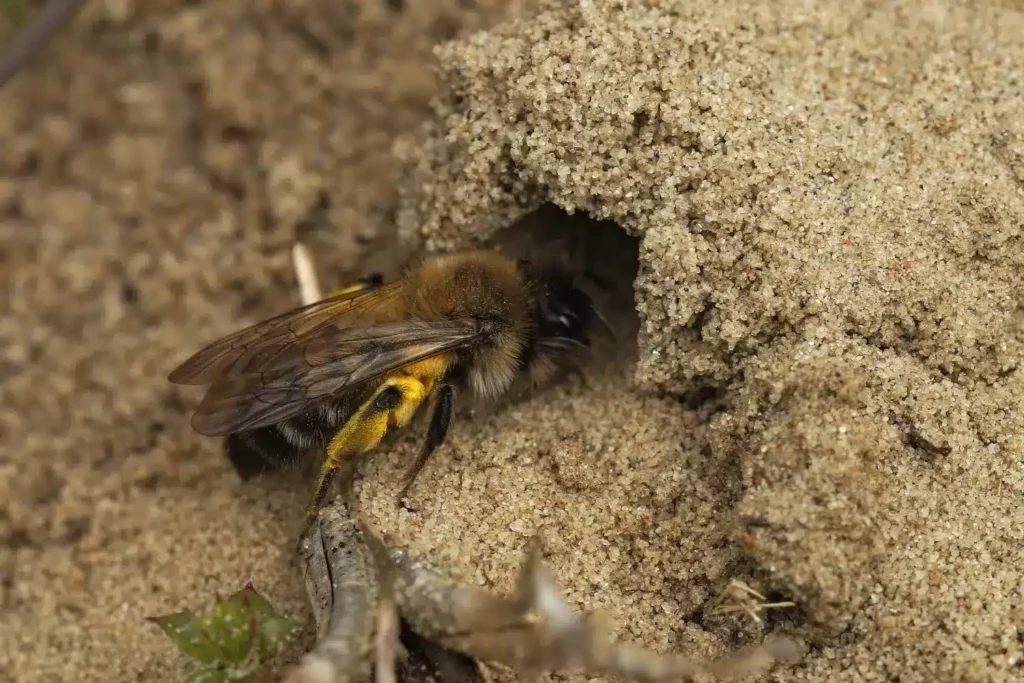
- Miner Bee (Andrenidae): Often small or medium-sized, excavating tunnels in the ground to lay eggs.
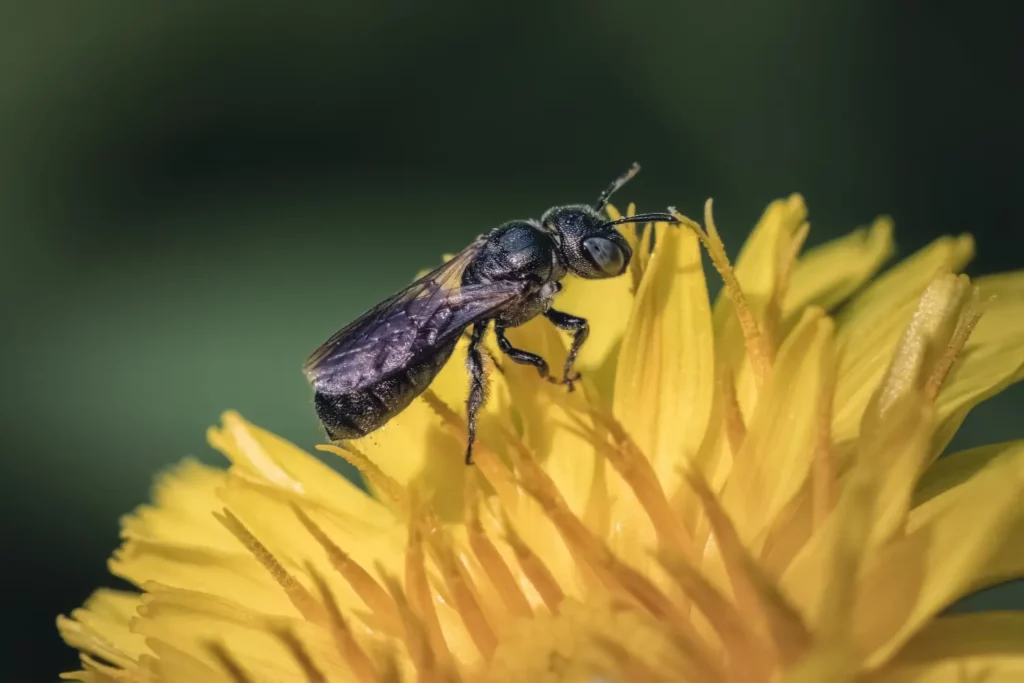
- Small Carpenter Bee (Ceratina): Tiny, often with a metallic blue-green body, burrowing into hollow stems.
Identifying Bee Hives
Bee hives come in all shapes and sizes. Honey bees build the intricate honeycombs most people are familiar with, bumble bees often nest underground, and carpenter bees tunnel into wood, leaving small, round entry holes. Before removing any hive or nest, figure out which type of bee you’re dealing with. Attempting to knock down a nest without proper precautions can provoke a swarm of defensive stings, which can be even more dangerous for anyone with bee allergies.
What Attracts Bees to Your Home?
Bees might decide to live near you for a few reasons:
- Shelter: Cracks, holes, and other openings in walls or roofing make great nesting spots.
- Food Sources: Uncovered trash cans, spilled sweets, and abundant flowering plants can all attract bees.
- Nesting Sites: Some species prefer underground spaces, while others go for wood tunnels or wall voids.
Signs of a Bee Presence
Seeing bees buzzing around is the most obvious clue, but you might also notice:
- Frequent Bee Activity: Lots of bees flying in a specific area usually means there’s a nest nearby.
- Buzzing Sounds: A consistent humming or buzzing inside walls or sheds can indicate hidden nests.
- Holes or Tunnels: Carpenter bees leave round holes in wood, while miner bees excavate small tunnels in the ground.
- Honeycomb: Honey bees craft distinctive combs; you might spot these in wall cavities or eaves.

“There are wide differences between how different Bee species nest & feed. Some bees build hives in places that can pose a threat to humans (think of an eave of a school, for example), while others nest in the ground or even in wood structures like your home. Our Hawx techs can identify bee types and help you understand the extent of the problem you’re facing. ”
Vice President of Technical & Training Services, Entomologist
What Problems Can Bees Cause?
Although bees are crucial for pollination, they can still create headaches around your home:
- Stings: Most bees won’t sting unless threatened, but stings can hurt, and severe allergic reactions are a real risk.
- Nesting in Inconvenient Areas: Hives in walls or eaves can be disruptive and difficult to remove.
- Wood Damage: Carpenter bees burrow into wooden structures, potentially causing cosmetic or structural issues.
How to Prevent Bees from Nesting Around Your Home
Keeping bees from settling in or around your home often comes down to removing whatever attracts them. A few strategies include:
- Eliminate Shelter: Seal up cracks and holes in foundations, walls, and roofs to limit potential nesting spots.
- Reduce Attractants: Keep trash containers covered, clean up food spills, and manage compost areas properly.
- Maintain Landscaping: Mow regularly, trim shrubs, and clear out debris so bees have fewer spots to set up shop.
- Natural Repellents: Plant mint, marigolds, or citronella around your home, and consider using peppermint or eucalyptus oil in likely nesting areas.
- Targeted Prevention: If you’re dealing with a specific species—like carpenter bees—painting or varnishing exposed wood can help discourage them.
Let Hawx Handle Your Bee Problem
Bees are vital to our environment, but that doesn’t mean you want them nesting in your walls or eaves. Hawx Pest Control takes a thoughtful, eco-conscious approach to dealing with bees while helping protect your home from damage. If you’re faced with a honey bee hive, our local experts will help connect you with local Bee specialists in the area.
Contact Hawx Pest Control today for a thorough inspection and a tailored treatment plan. We’ll keep unwanted bees at bay, so you can enjoy the benefits of these important pollinators—without the stress of having them too close to home.
Bee Identification: What Are the Main Types of Household Bees?
Bees can vary widely from species to species, so it's important to know how to identify bees that typically invade homes.
Is your property under threat from stinging insects? Contact Hawx Pest Control today for bee control services in your area.


